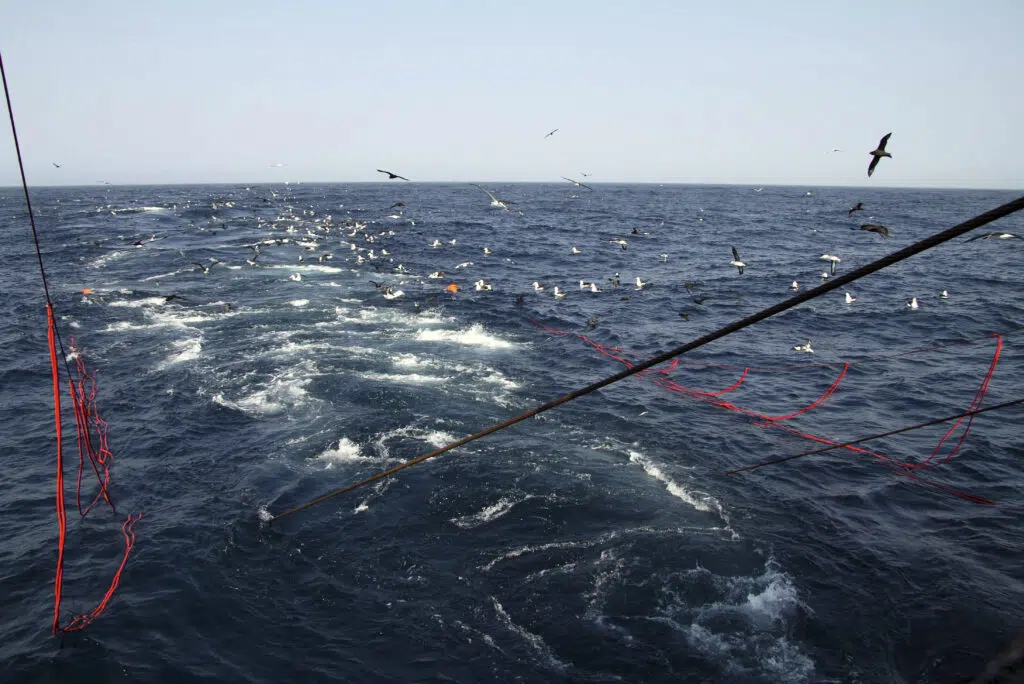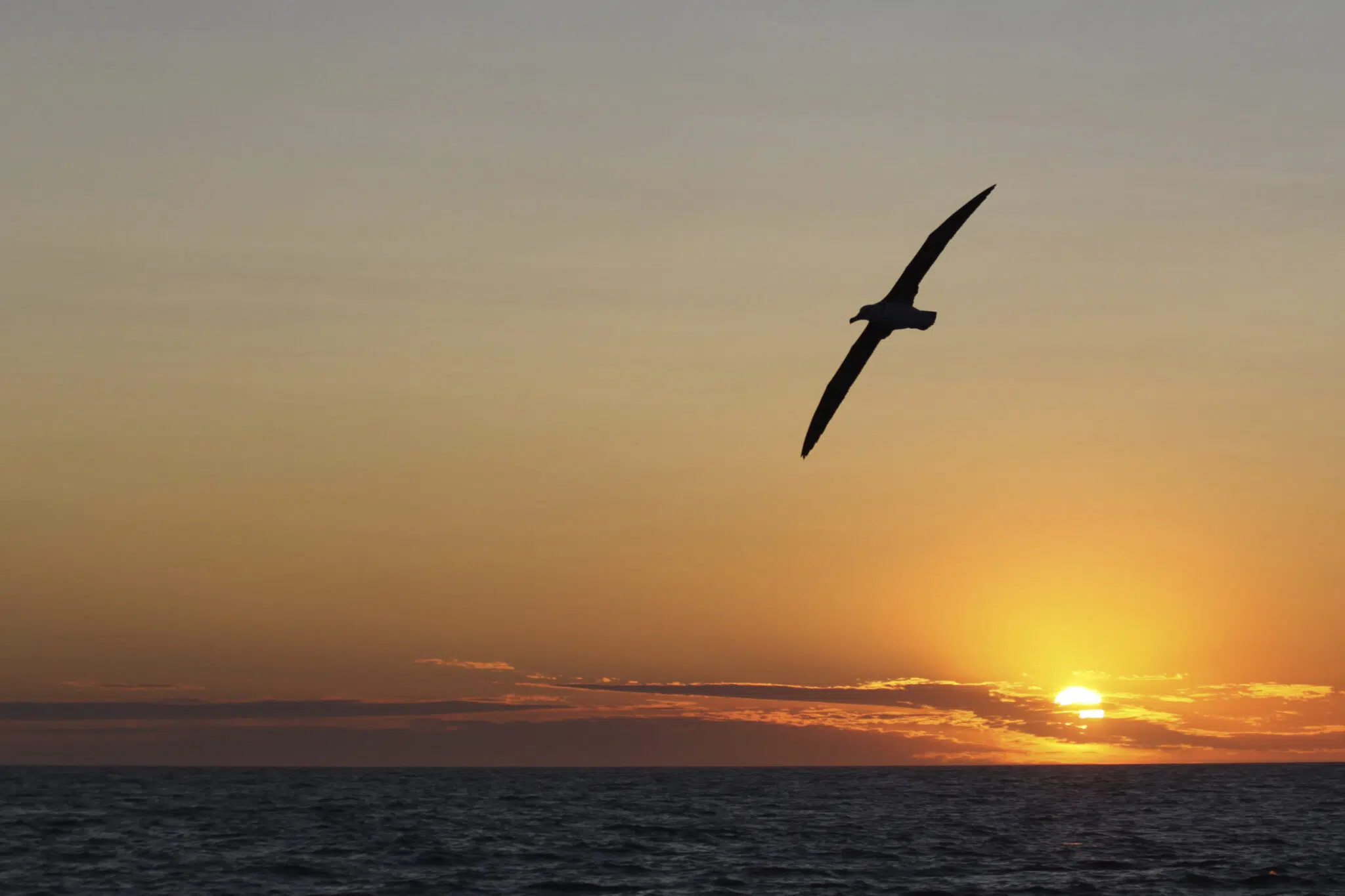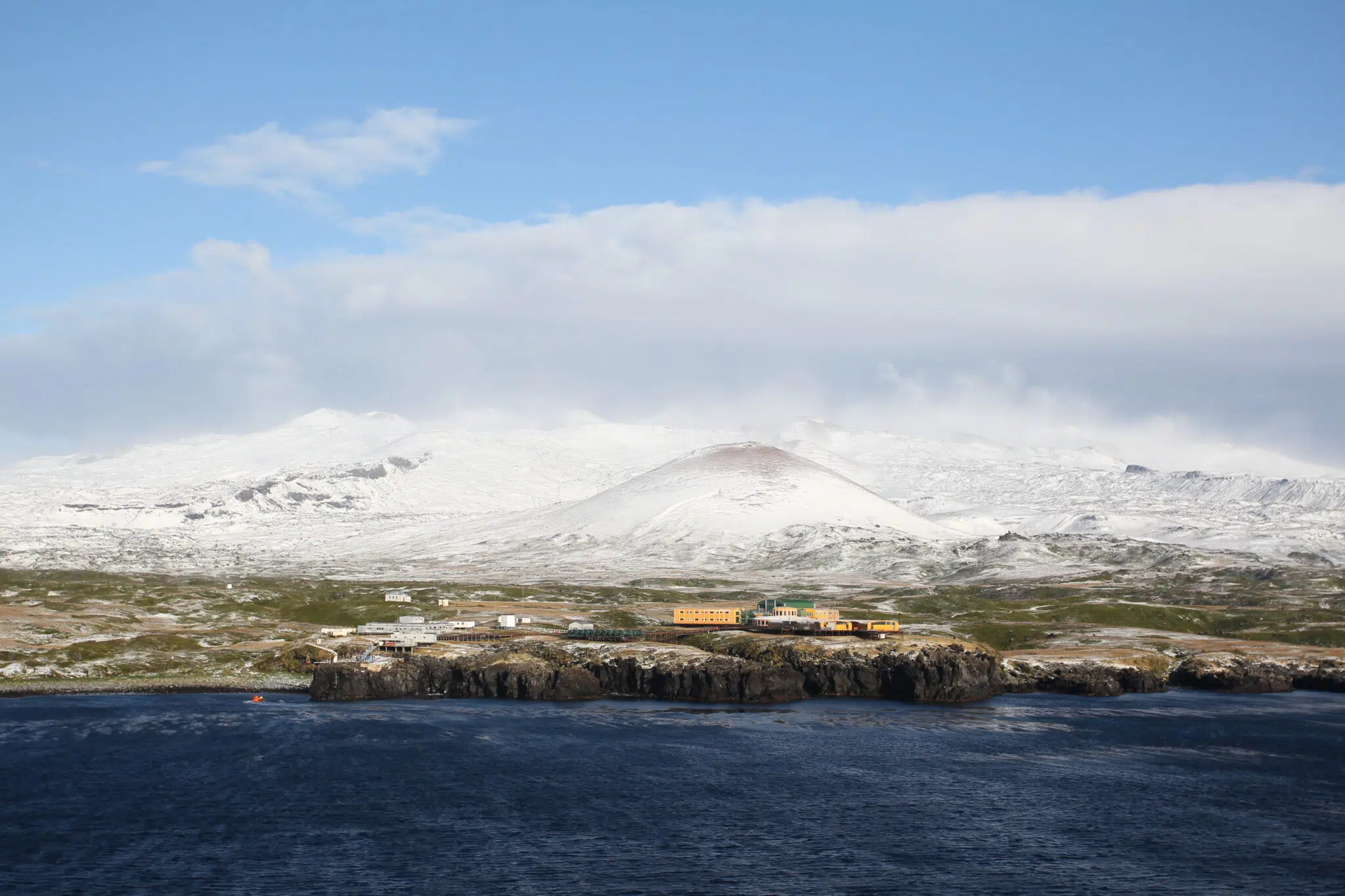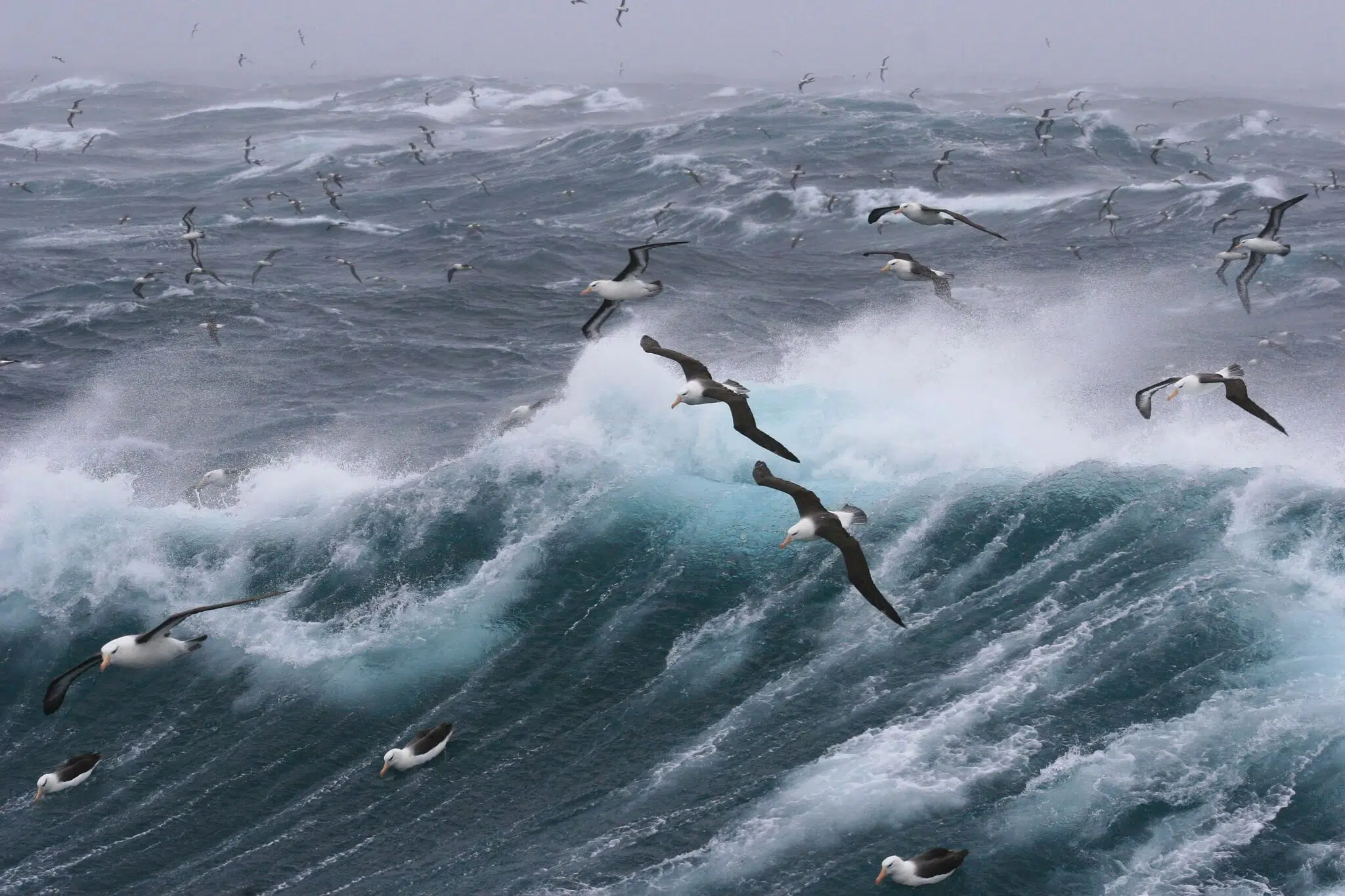Albatrosses: Inspiring Legends & Myths
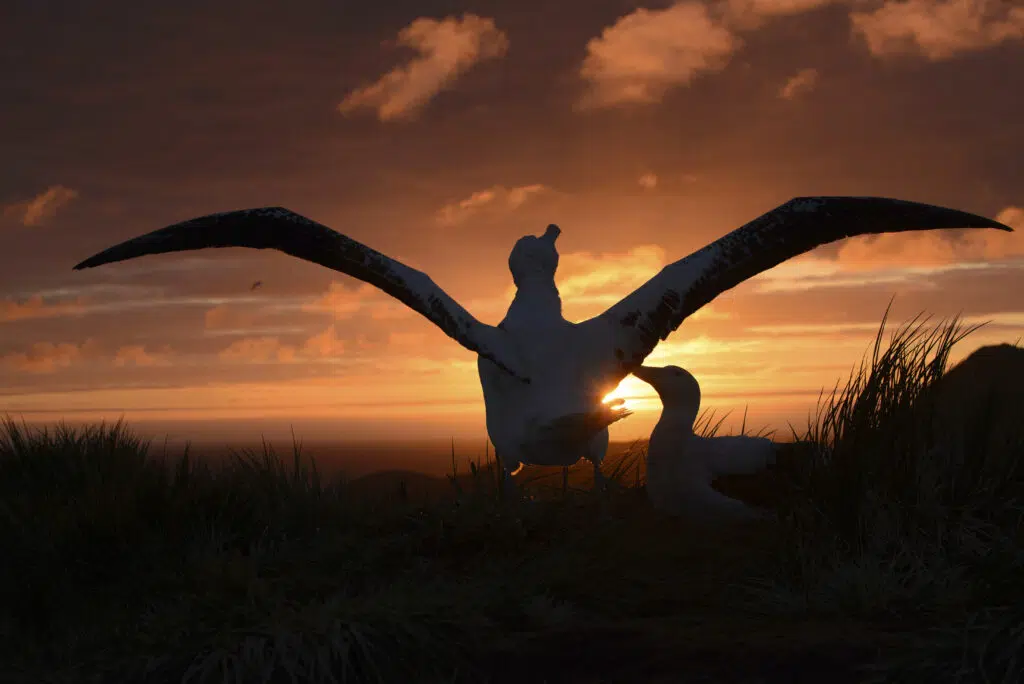
Albatrosses have long been a symbol of mystery and fortune in literature and culture. Ancient tales suggest that their presence brings luck to seafarers. While some legends and myths have faded from memory today, the reverence for these ocean wanderers still lives on. To celebrate World Albatross Day, we share some of the tales behind these incredible species.
By Cintia Baranyi
Header image: A pair of Wandering Albatrosses at sunset © Alastair Wilson (rspb-images.com)
Good Fortune
Many once believed that albatrosses embodied the souls of lost sailors and possess magical qualities that can be harnessed to aid in healing. To harm an albatross was a harbinger of the sea’s wrath. In Samuel Taylor Coleridge’s The Rime of the Ancient Mariner (1798), the protagonist uses his crossbow to kill an albatross, causing fear that the incident will bring misfortune to the crew. As the story progresses, their misgivings are confirmed, and his fellow sailors force him to wear the bird remains around his neck as a form of penance. The deceased albatross then served for centuries as an expression of regret for past mistakes and sins.
Albatrosses are excellent navigators, using ocean winds to navigate the High Seas. As such, by observing albatrosses, some sailors were able to adjust their course to avoid hazardous conditions. The lack of a large ocean wanderer was, in fact, a negative omen; the mere sight of it was enough to persuade superstitious seafarers that their journey would be successful.
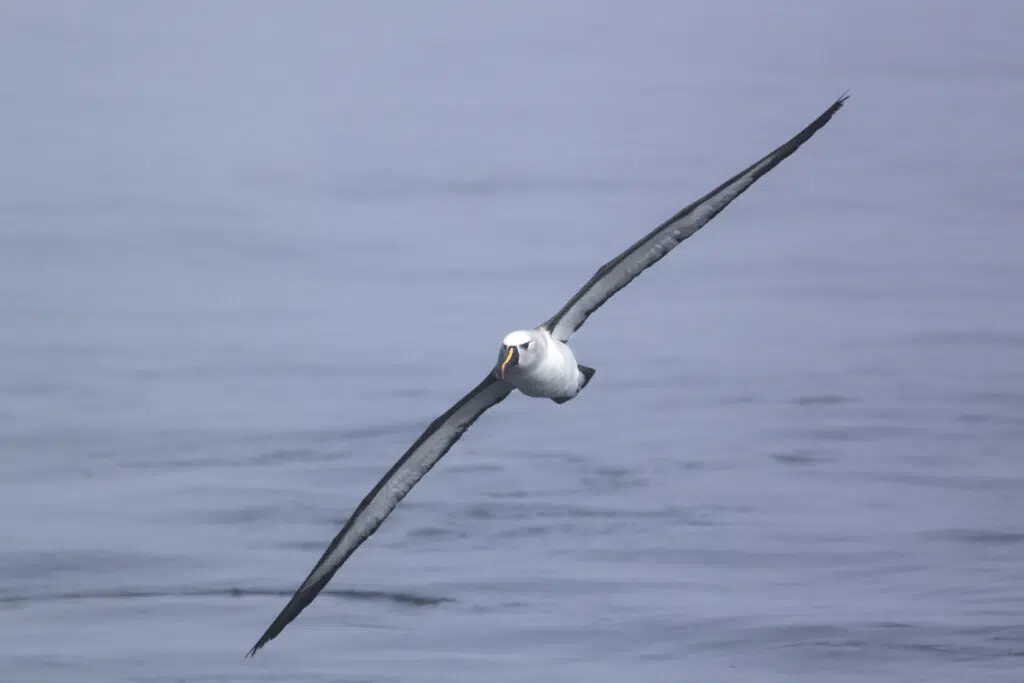
Power
Carl Linnaeus, who, in the 18th century, invented the system of Latin names by which different species are known, called the group Diomedea, a reference to the Greek legend in which the companions of the warrior Diomedes are transformed into birds. Linnaeus was likely motivated by accounts circulating in Europe at the time, which narrated the remarkable sight of these colossal birds, some of which possess wingspans of more than 3-metres long, gliding alongside ships that were struggling to navigate the turbulent waters of the Southern Ocean.
Albatrosses are often referred to as the ‘Prince of the Wave’, not only due to their impressive size but also their capabilities, given they possess strong wings that enable them to remain aloft for extraordinarily long periods without the need to land. These birds are experts in flying, capable of soaring over extensive areas of the sea without flapping their wings. As adults, they spend years travelling thousands of miles around the globe. They’re always on the move, and some species fly around the Antarctic two or three times before making their way to their breeding grounds on remote islands in the Southern and Indian Oceans.
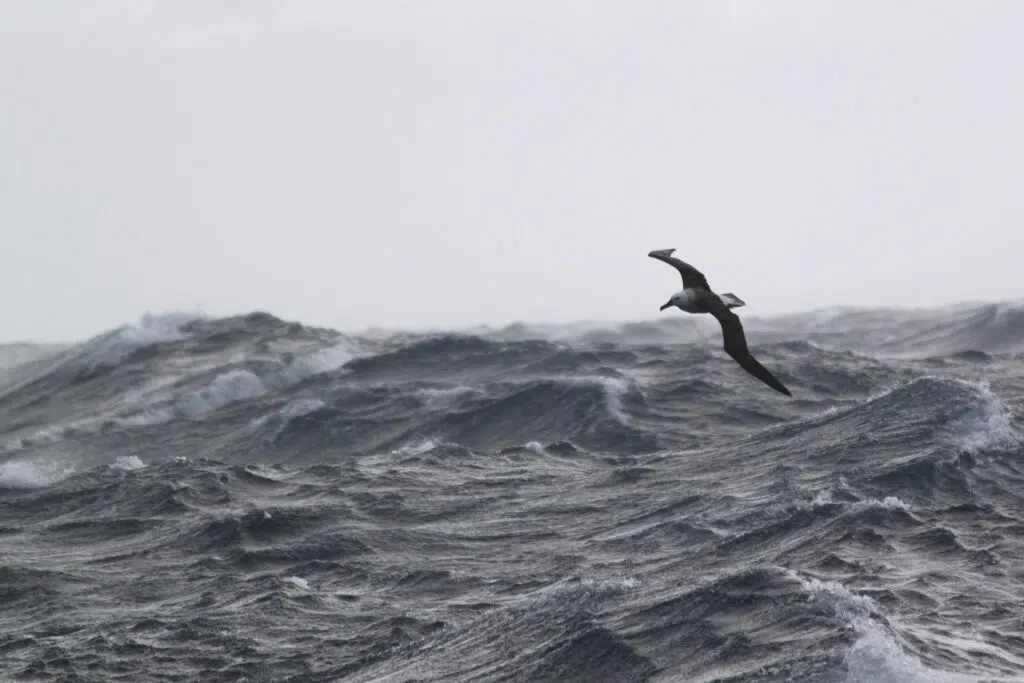
Everlasting Love
Albatrosses do not typically congregate on land; when they do, they are usually found on isolated islands where they form large colonies. They mate for life and are frequently referred to as having the most minimal ‘divorce rate’ among all birds. Adults are renowned for their intricate courtship dance displays – for instance, Wandering Albatross pairs have a minimum of 22 distinct dance moves, that includes head rolling, wing spreading, and beak-clacking. The impressive display of Laysan Albatross involves 24 different movements that includes everything from whinnying and head flicking to air snapping and clucking. These mating rituals, which continue to evolve over time, have ultimately become one-of-a-kind. The couple that eventually mates will then lay a single egg.
Albatross pairs have a restricted time together, briefly congregating solely at their breeding sites until their egg is produced. Subsequently, they alternate between incubating the egg and hunting for sustenance. Eventually, both birds must scour the ocean for food to nourish their developing offspring, and once this becomes independent, the pair goes their separate ways for the rest of the year, reconnecting solely to breed again.
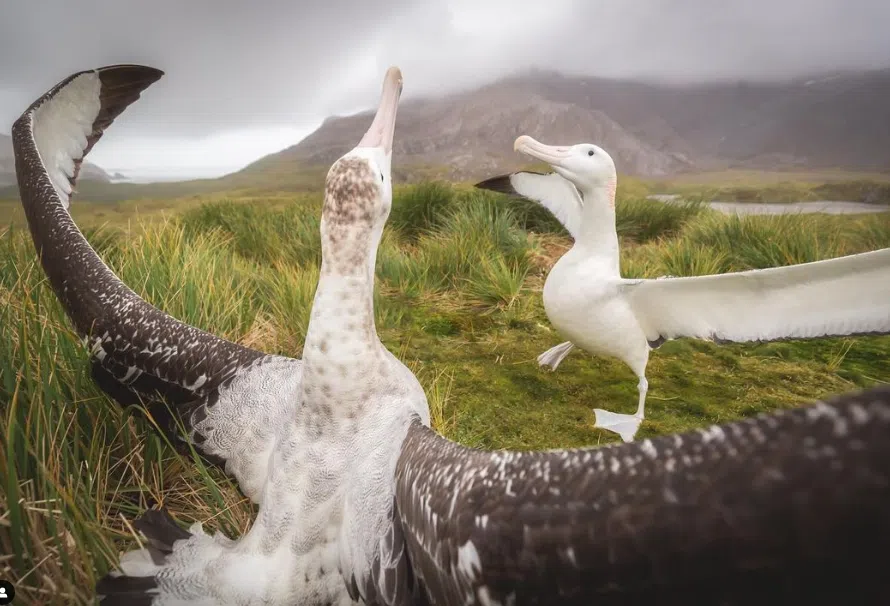
Vulnerable
Just like the many myths and legends about them, albatrosses are long-lived species. The most renowned instance is that of a Laysan Albatross named Wisdom, first tagged by scientists in 1956 at Midway Atoll. Wisdom has kept coming back to Midway and is thought to have successfully raised an impressive 36 offspring – and at at least 70 years old she is one of the oldest wild birds recorded!
Unfortunately, not all seabirds are as long-lived as Wisdom. All over the world, thousands of birds make their way to fishing fleets, where unwanted fish and discarded offal provides a rich feeding ground. Sadly, many don’t survive, getting caught on fishing lines or flying into trawl cables or nets. Indeed, every year an estimated 100,000 to 500,000 seabirds are incidentally killed in fishing operations, also known as bycatch, and BirdLife partners around the world are working hard to reduce these impacts.
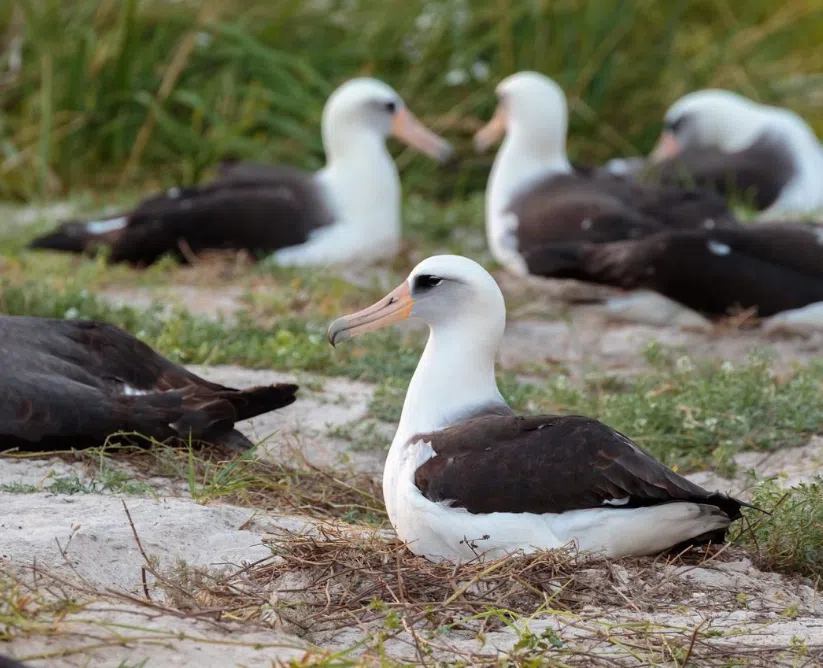
Conservation Efforts
The RSPB and BirdLife International initiated the Albatross Task Force (ATF) to reduce the mortality rate of albatrosses and petrels and ultimately improve the conservation status of threatened seabirds, and in several fisheries has achieved remarkable results.
While much work remains to be done, vessels adhering to the cost-effective guidelines the ATF continues to develop have saved tens of thousands of seabirds annually. These simple and effective mitigation strategies include bird-scaring lines and the weighting of hook lines to enable them to sink quickly beyond the reach of foraging birds. Albatross bycatch has been reduced by 99% in hake trawl fishing in South Africa, and experimental trials have shown that seabird bycatch reductions as high as 85% are possible in six other fishing areas where regulations require bird-safe fishing practices.
In collaboration with governments and industry, we aim to implement the necessary improvements to help seabirds, which are one of the world’s most threatened groups. Through the efforts of the ATF and the BirdLife International Marine Programme, we hope to prevent albatrosses from wholly becoming another myth and legend.
